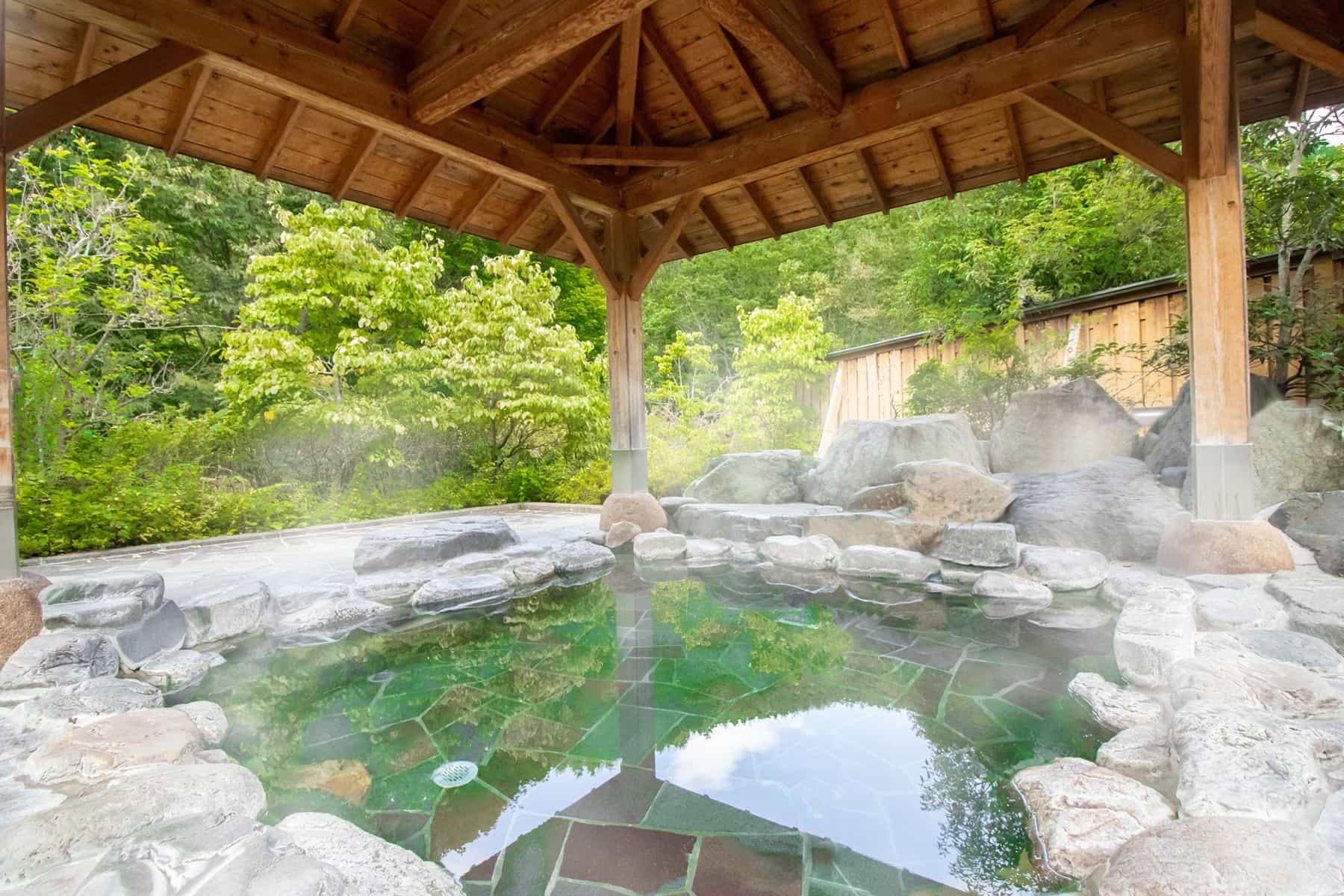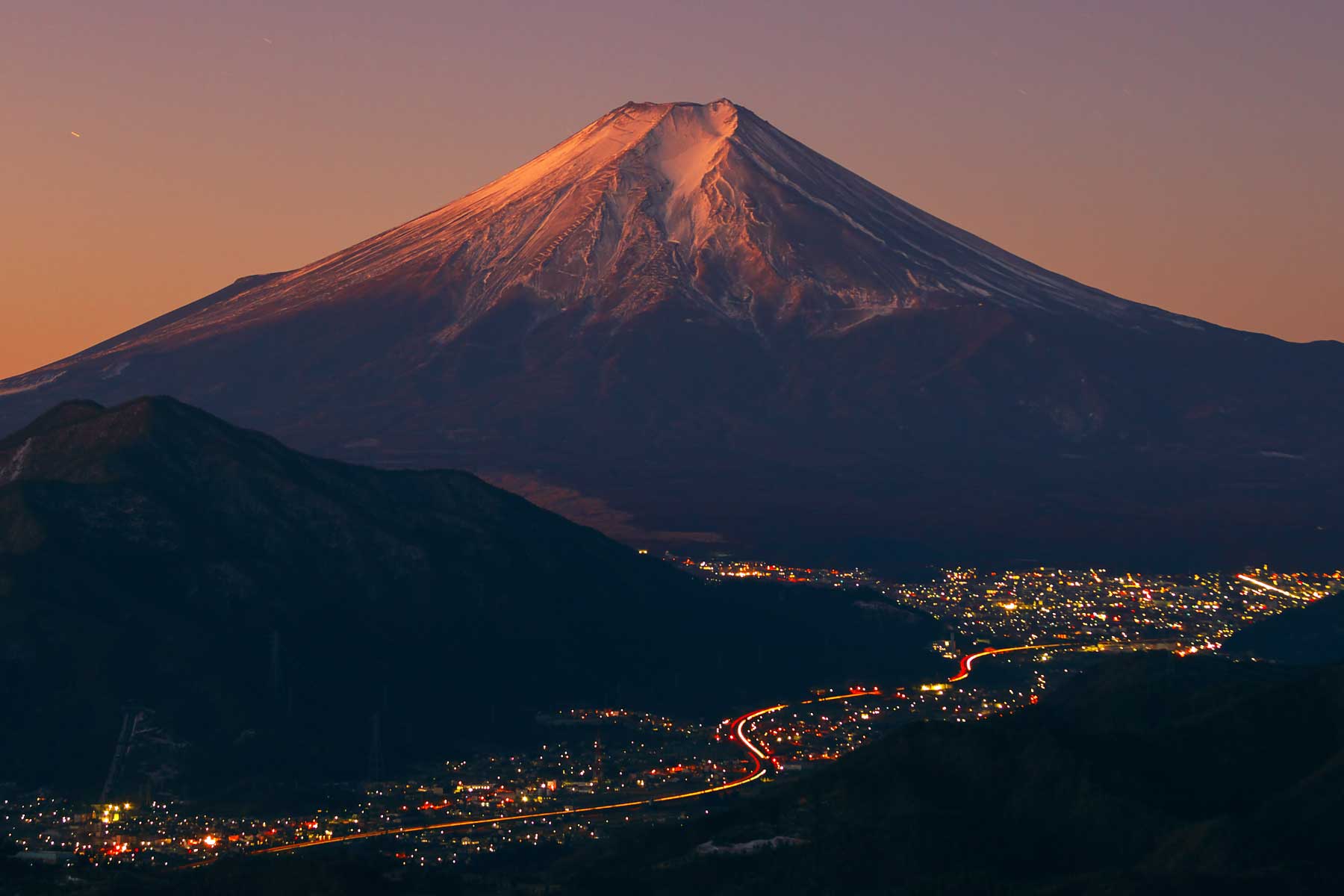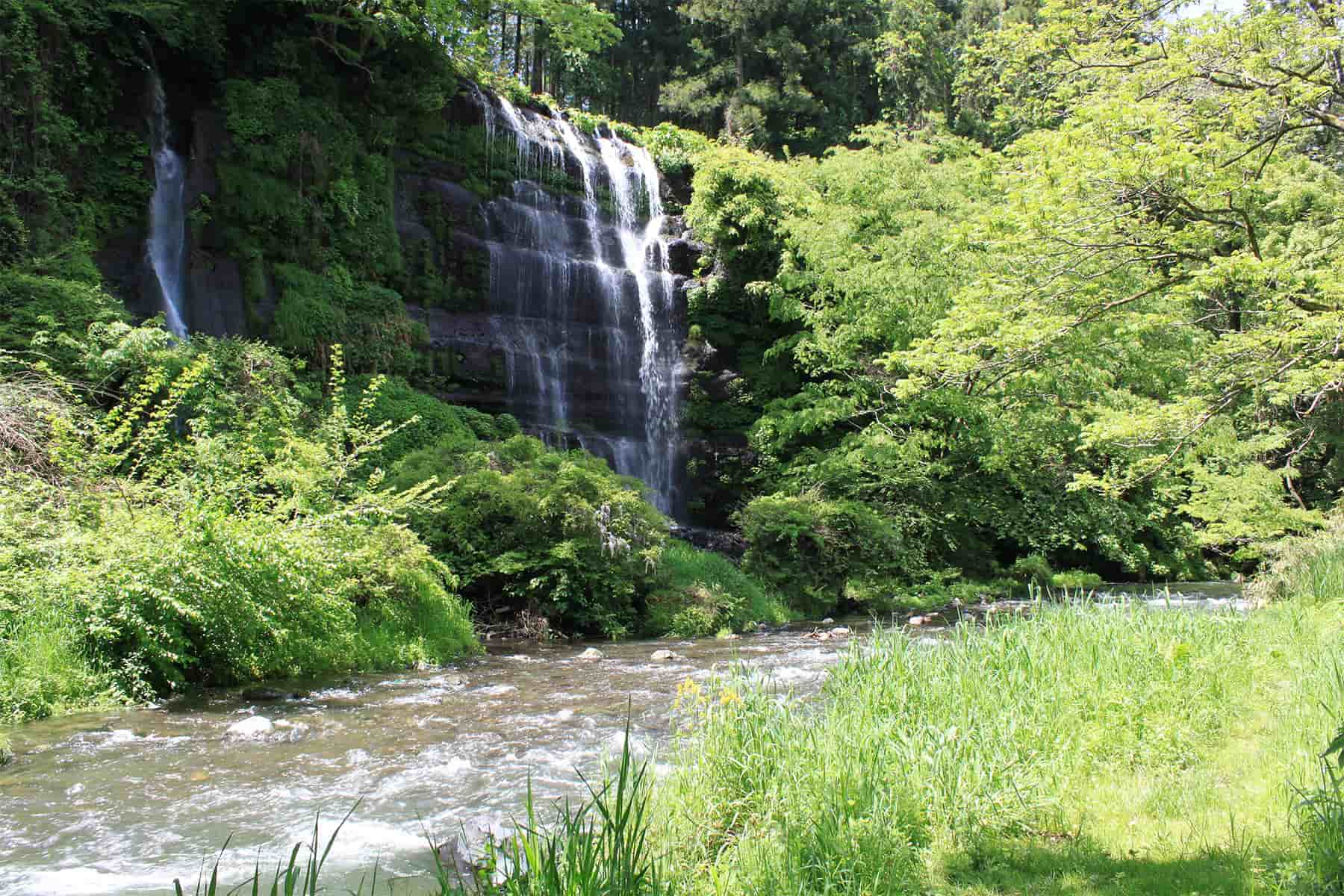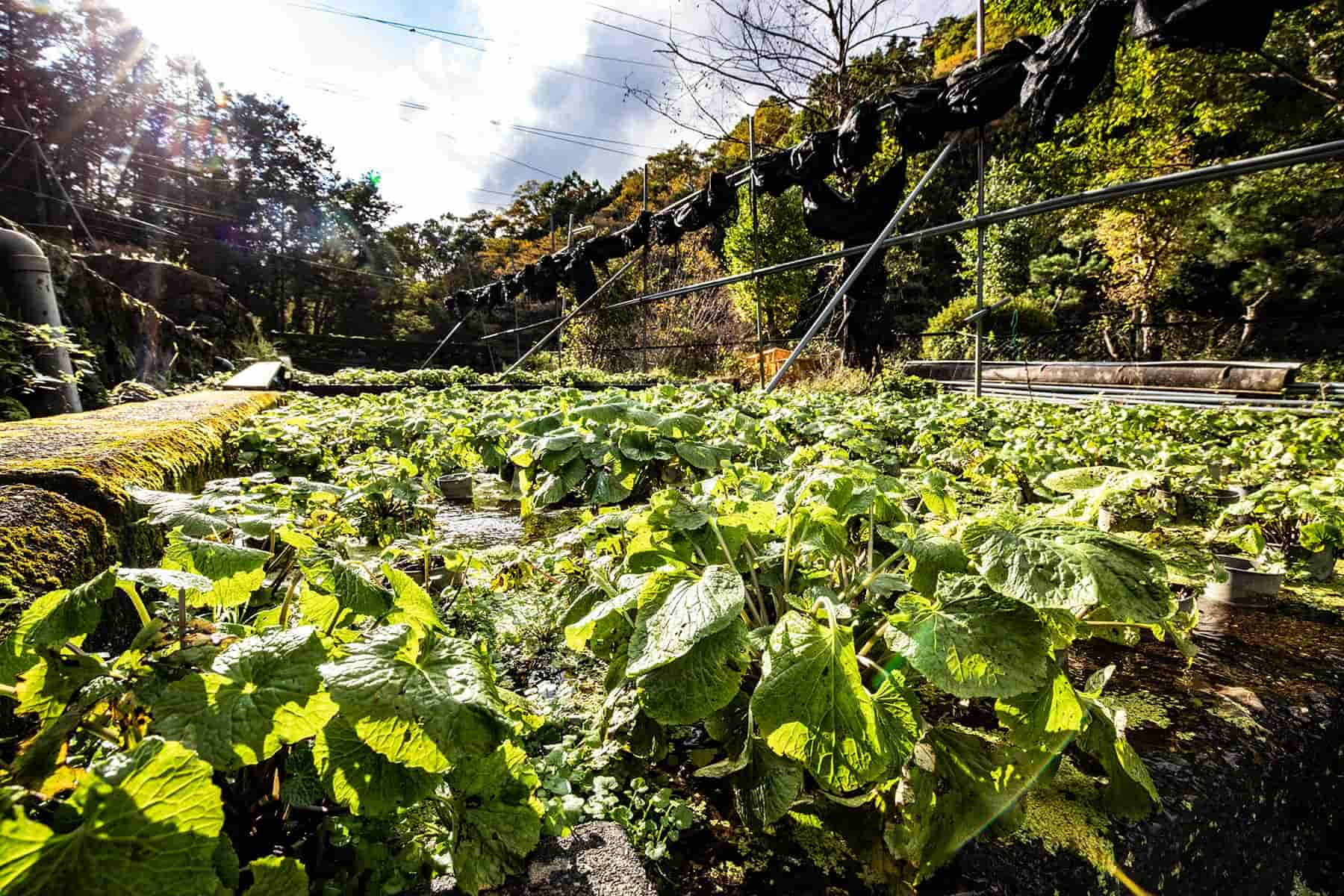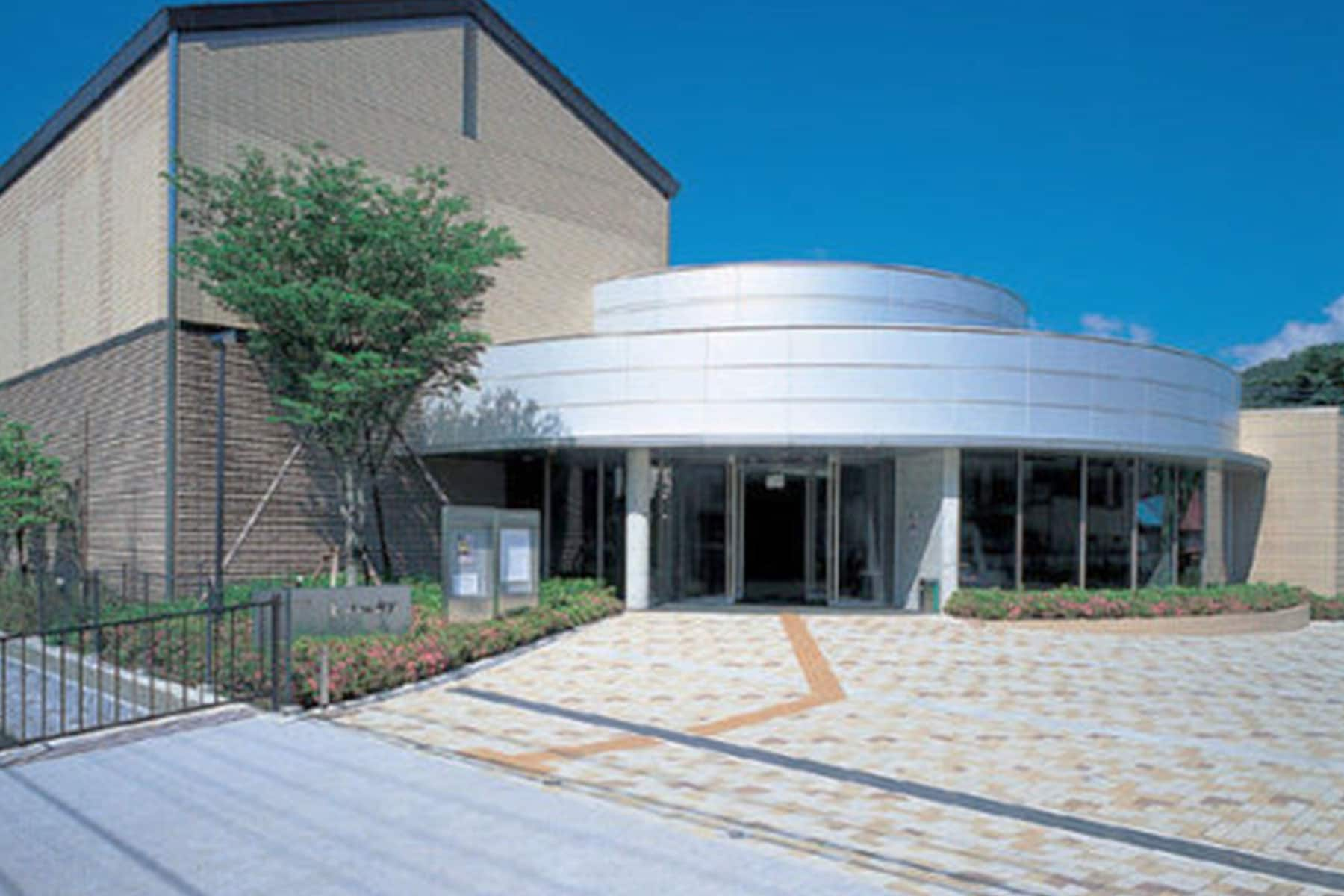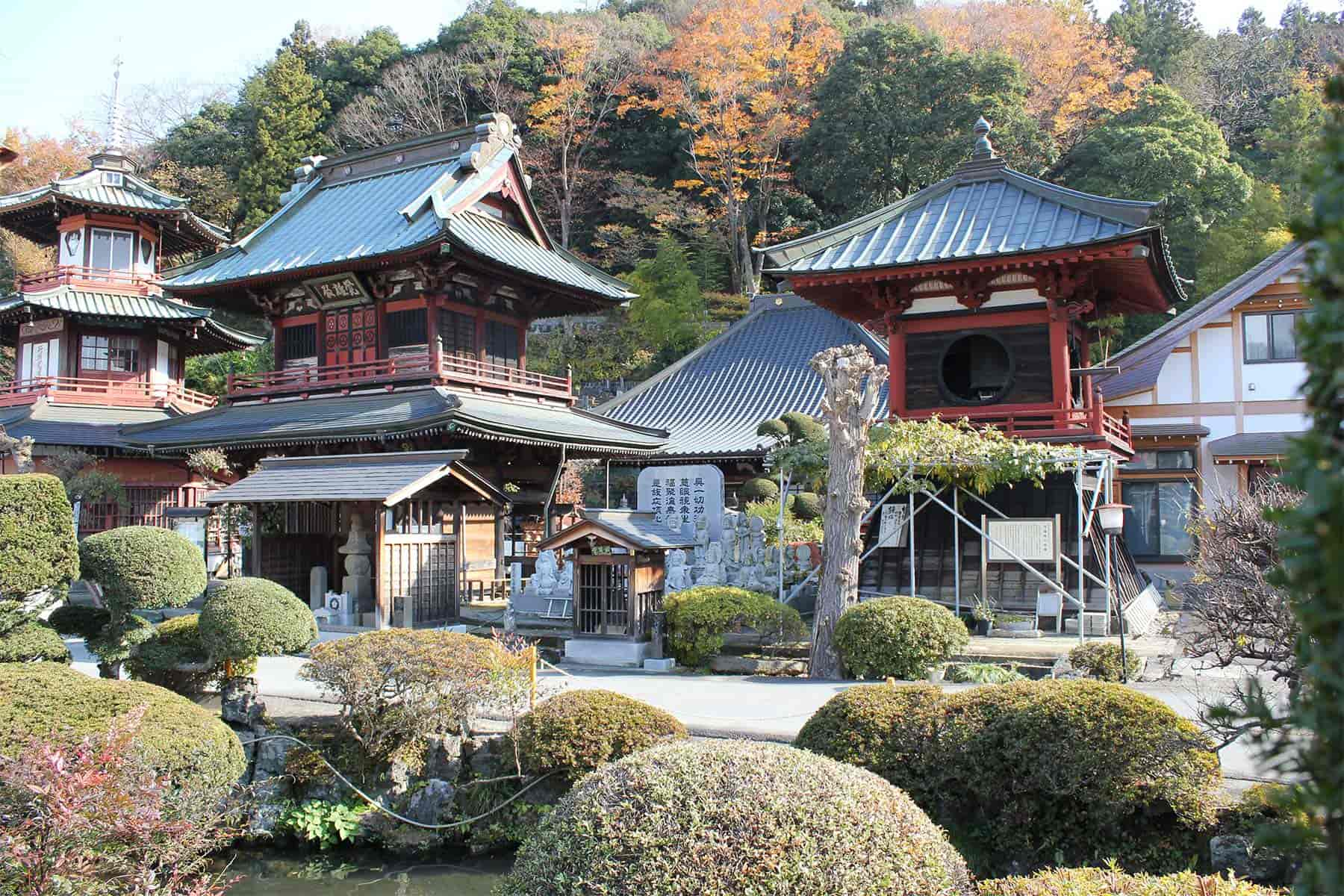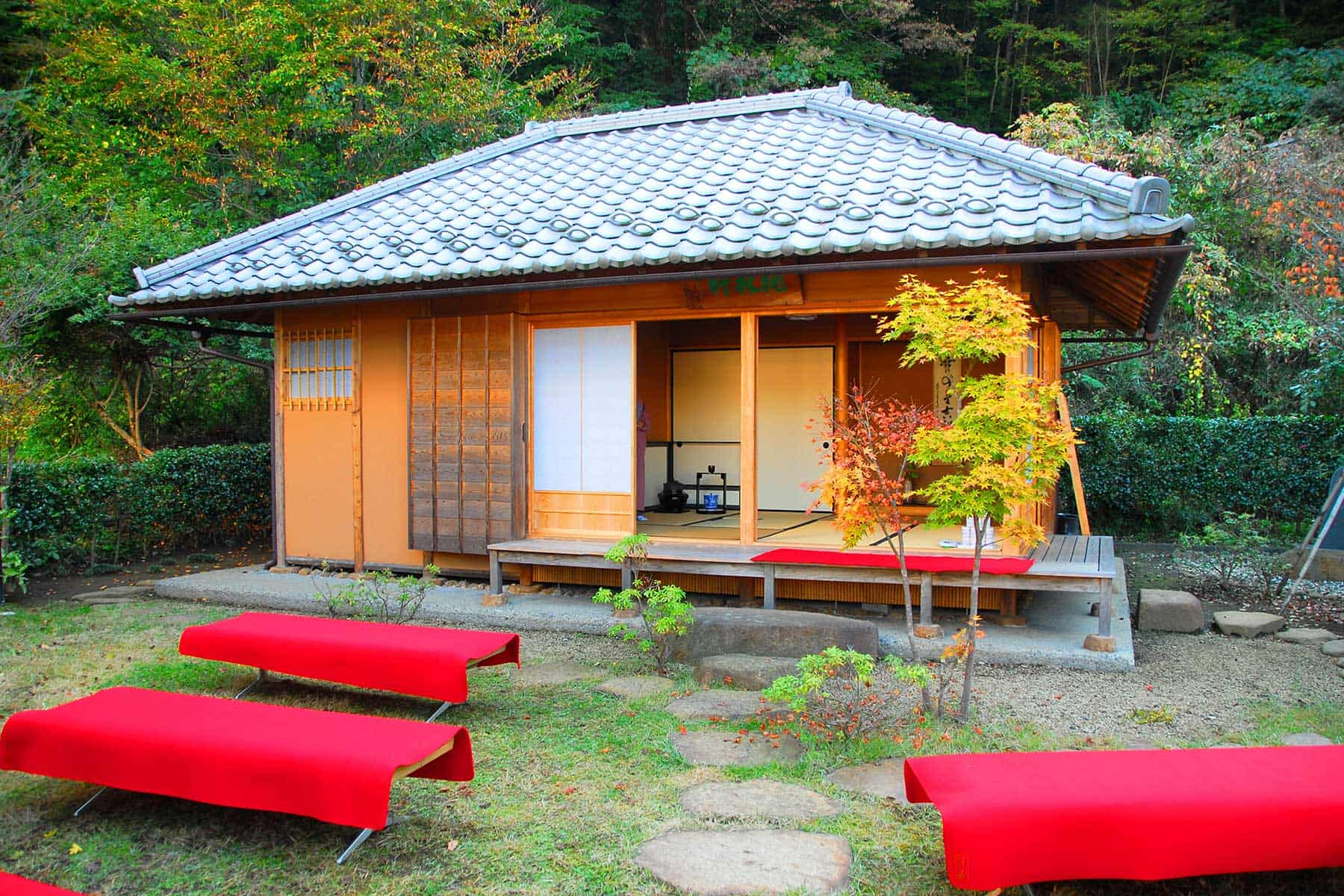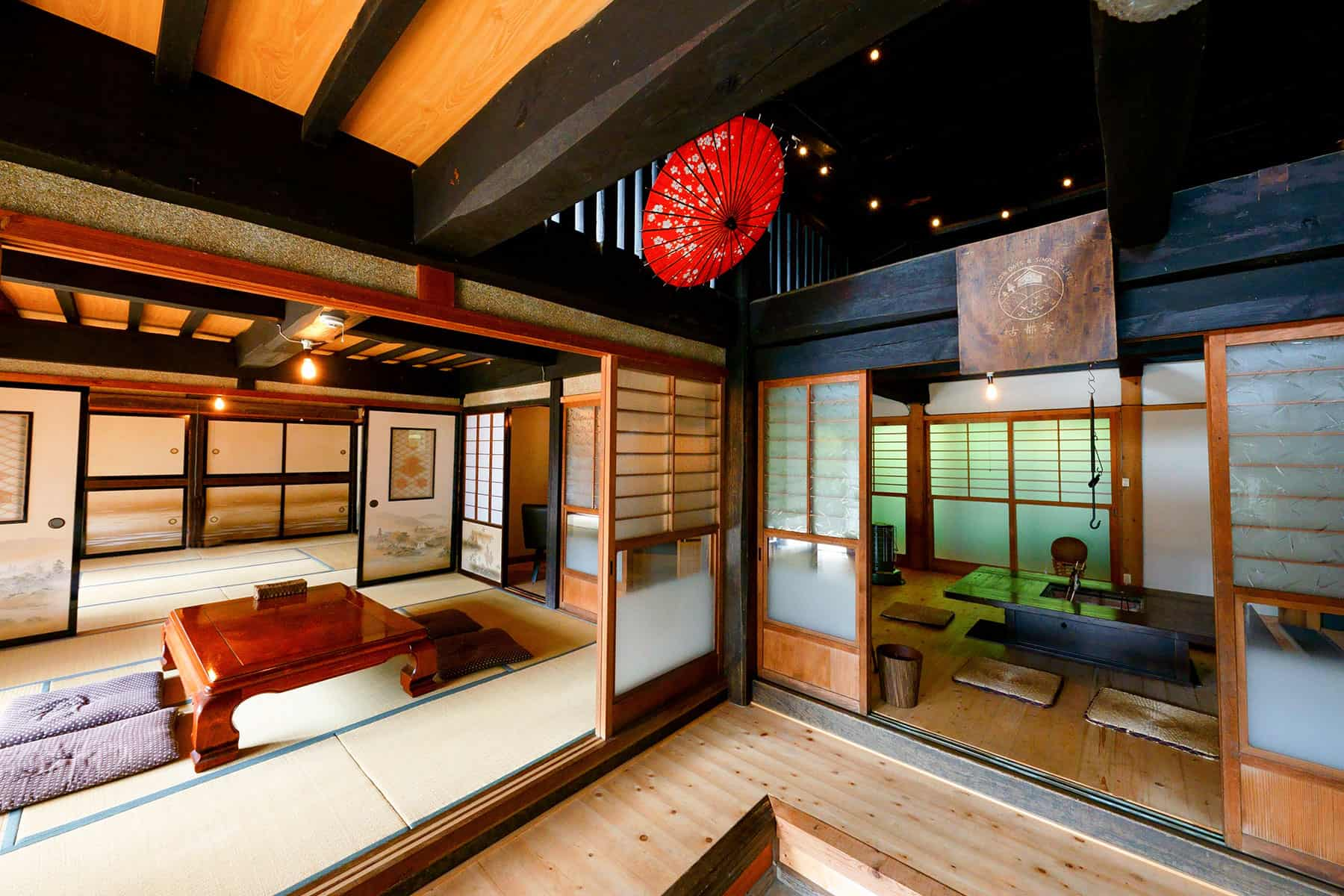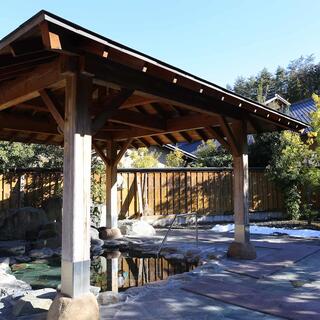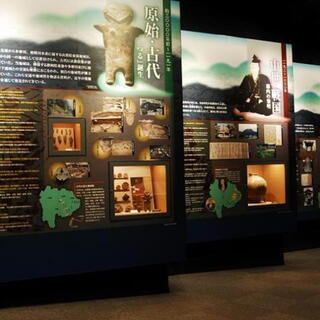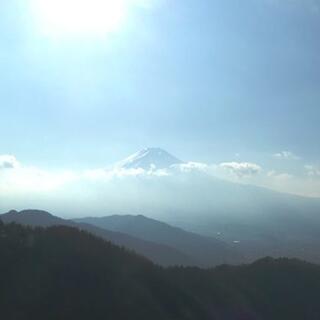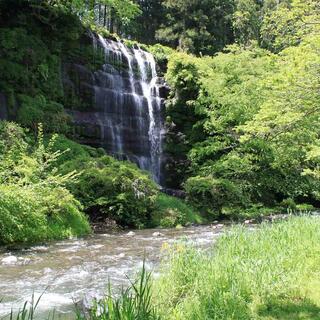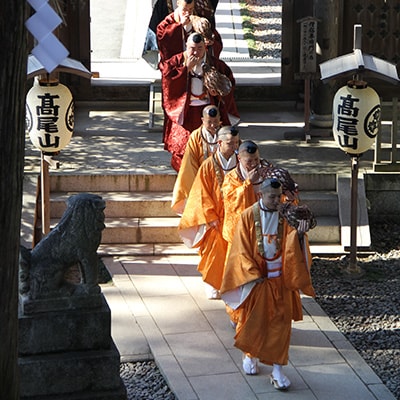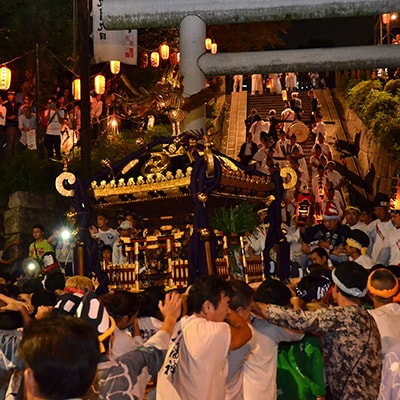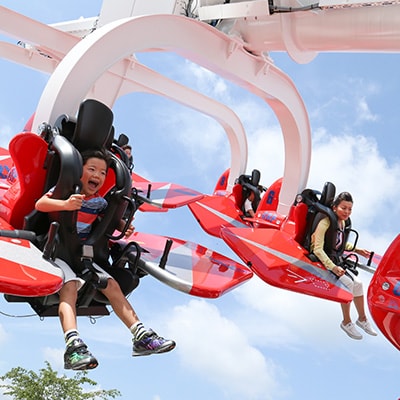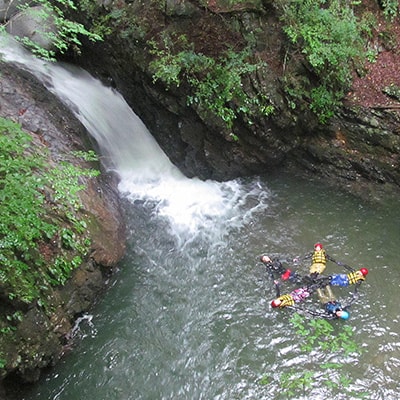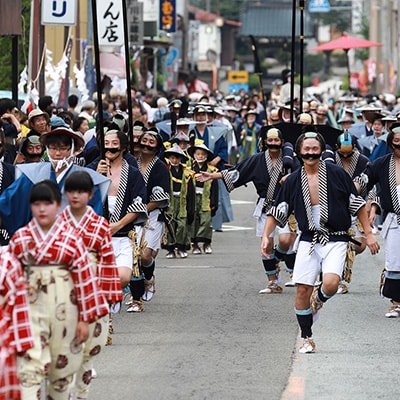If you make the Nagominosato Hot Spring and Recreation Complex or Yorimichinoyu near Tsurushi Station your home base, you’re in a good position to hit the mountain trails, wander Tsuru’s districts, or indulge in some hands-on experiences like and then enjoy a long soak in the hot spring at the end of the day.
Tsuru is enveloped by hills and mountains the city labeled the Tsuru Alps, complete with a system of routes that can entertain the hiking enthusiast for a morning or half a day. Besides getting some fresh mountain air into the lungs, it offers great views to capture on camera.
If you’re looking for more of a challenge (or a more magnificent view of Mt. Fuji), Tsuru offers you 21 peaks to try, ranging from easier 500-meter climbs to others well over 1,700 meters high.
The Katsura River that flows through central Tsuru has its source in Lake Yamanaka—one of the Five Fuji Lakes—and features the impressive, tiered Tahara Falls, a scenic spot in the city’s Tokaichiba district.
Mt. Fuji’s volcanic activity also made Tsuru’s water pretty special, and the Tokaichiba and Natsugari Springs provide the area with the perfect means of irrigation for mizukakena turnips and that quintessential condiment for sushi—wasabi.
The latter is one reason why you should single out Tsuru for a visit, because the Kikuchi Wasabi Farm lies down in a small dell that looks like it was pulled right out of a Ghibli film, and with Kikuchi-san’s friendly demeanor, animating him too into the movie would be the right decision!
Pluck one of two types of the all-organic wasabi in the waterlogged fields, shave some off, and give it a try. It will likely be eye-opening—and nasal-clearing—in that it will illustrate the difference between the real deal and the tubed stuff in supermarkets, and it’s an experience and atmosphere you won’t easily find elsewhere.
Historically, the central Yamura area of Tsuru flourished as a town situated below Katsuyama Castle . A visit to Museum Tsuru will help you learn more about Tsuru’s past and how it came to be widely known as a castle-town. The city also has numerous temples to get a firsthand feel for the many eras it has seen, such as Enzuin Temple. This Soto Zen Buddhism temple features a bonsho bell over 300 years old that the city designated a Cultural Property. The float display for the city’s autumn Hassaku Festival gives you a closeup look of their exquisite craftsmanship. A day taking in Tsuru’s rich history is definitely one way to experience the city.
Keeping with the “historical theme,” opt for a stay at Kotoya —a renovated traditional Japanese home 15 minutes outside town—at the end of your day and you’ll have opportunities even the average Japanese person doesn’t enjoy often, namely the warmth of the irori indoor hearth and a soak in the goemonburo oil drum baths outside.
Going northeast toward Tokyo will take you to Tsuru’s Kasei area, where you can “time travel” between the dawn of the 20th century and the future to come.
The Ogata Local History Museum was originally an elementary school and is an early example of Giyofu architecture (imitating a Western exterior using Japanese techniques). Just a couple kilometers away is where the Ochiai Aqueduct stands, its brick construction remaining as it was since it was first built over 100 years ago.
Moving to the future, a visit to the Yamanashi Prefectural Maglev Exhibition Center nearby is where you can see a scale model of Japan’s maglev train car up close, get a taste of what 500 km/h feels like—complete with vibration—in the center’s dedicated theater, and more. Not far from the center lies the Michinoeki Tsuru rest stop, where you might consider wrapping up your visit with some of the very unique gelato flavors and buying some souvenirs to commemorate your trip.


